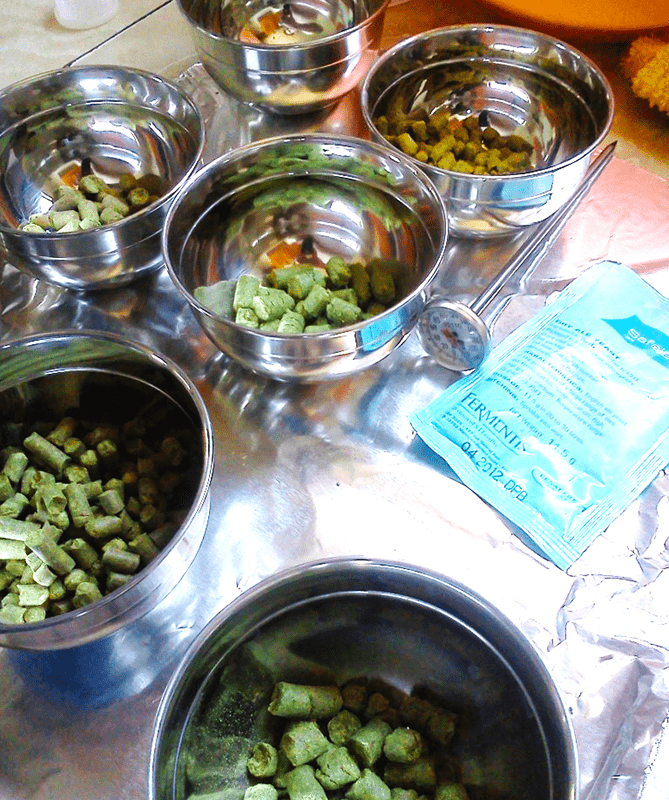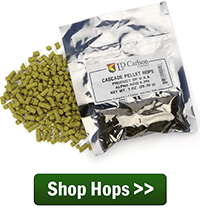Hops – they’re the defining ingredient in many styles of both craft and homebrewed beer. From brown ales to stouts to IPAs, there’s hardly a beer out there that isn’t made with the addition of hops.
the defining ingredient in many styles of both craft and homebrewed beer. From brown ales to stouts to IPAs, there’s hardly a beer out there that isn’t made with the addition of hops.
You may be aware that adding hops to beer at different points of the boil contribute different characteristics to the finished beer. Hops added early to the boiling wort are responsible for most of the bitterness in the beer, while hops added later to the boil contribute more of the floral, spicy, piney, or citrusy flavor and aroma qualities that hopheads know and love.
If you are following a beer recipe it is customary for it to state the boiling times for the various hop additions, whether it be: 60, 30, 15 or 5 minutes. Just following these times for standard hop additions.
But besides these standard hop additions through out the wort boil, there are a few alternative techniques for adding hops to beer that you may want to have in your homebrewing tool box:
- First wort hops – First wort hopping involves adding hops while collecting the runnings from an all-grain mash. Simply take the hops that you would add at the end of the boil and place them in the brew kettle as you collect the wort pre-boil. Some brewers believe that this technique results in “a more refined hop aroma, a more uniform bitterness, and a more harmonious beer overall.”
- Dry hop – Dry hopping is the practice of adding hops to the secondary fermenter while the beer is conditioning. This is another technique which adds additional aroma to the beer. As with first wort hopping, low alpha acid aroma hops are best suited for dry hopping. Use a screen, mesh hop bag, or cold crash your beer to separate the hops from the finished beer.
- Hop back – This is a method of adding hops to beer that is a little bit more involved. A hop back is a piece of equipment used to recirculate beer through the hops packed into it. For Sierra Nevada,
 it’s called a torpedo (hence “Torpedo” IPA), and for Dogfish Head it’s called Randal the Enamel Animal. If you’re a do-it-yourself-er, you can build your own hop back using a stainless steel container and standard hardware store fittings.
it’s called a torpedo (hence “Torpedo” IPA), and for Dogfish Head it’s called Randal the Enamel Animal. If you’re a do-it-yourself-er, you can build your own hop back using a stainless steel container and standard hardware store fittings.
- Foosball table – If you’re a fan of the Dogfish Head IPAs, you’ve probably heard why they’re named 60-Minute, 90-Minute, and 120-Minute. Founder Sam Calagione originally used a jury-rigged foosball table for adding hops gradually throughout the 60-, 90-, or 120-minute boil. The idea is that this “continual hopping” results in a more rounded hop profile. While that may be true, this example highlights how creative ideas can be applied to the brewing process. Don’t be afraid to try out some techniques of your own!
What’s your “go-to” technique for adding hops to beer? Please share in the comments below!
—–
David Ackley is a beer writer, brewer, and self-described “craft beer crusader.” He holds a General Certificate in Brewing from the Institute of Brewing and Distilling and is founder and editor of the Local Beer Blog.
